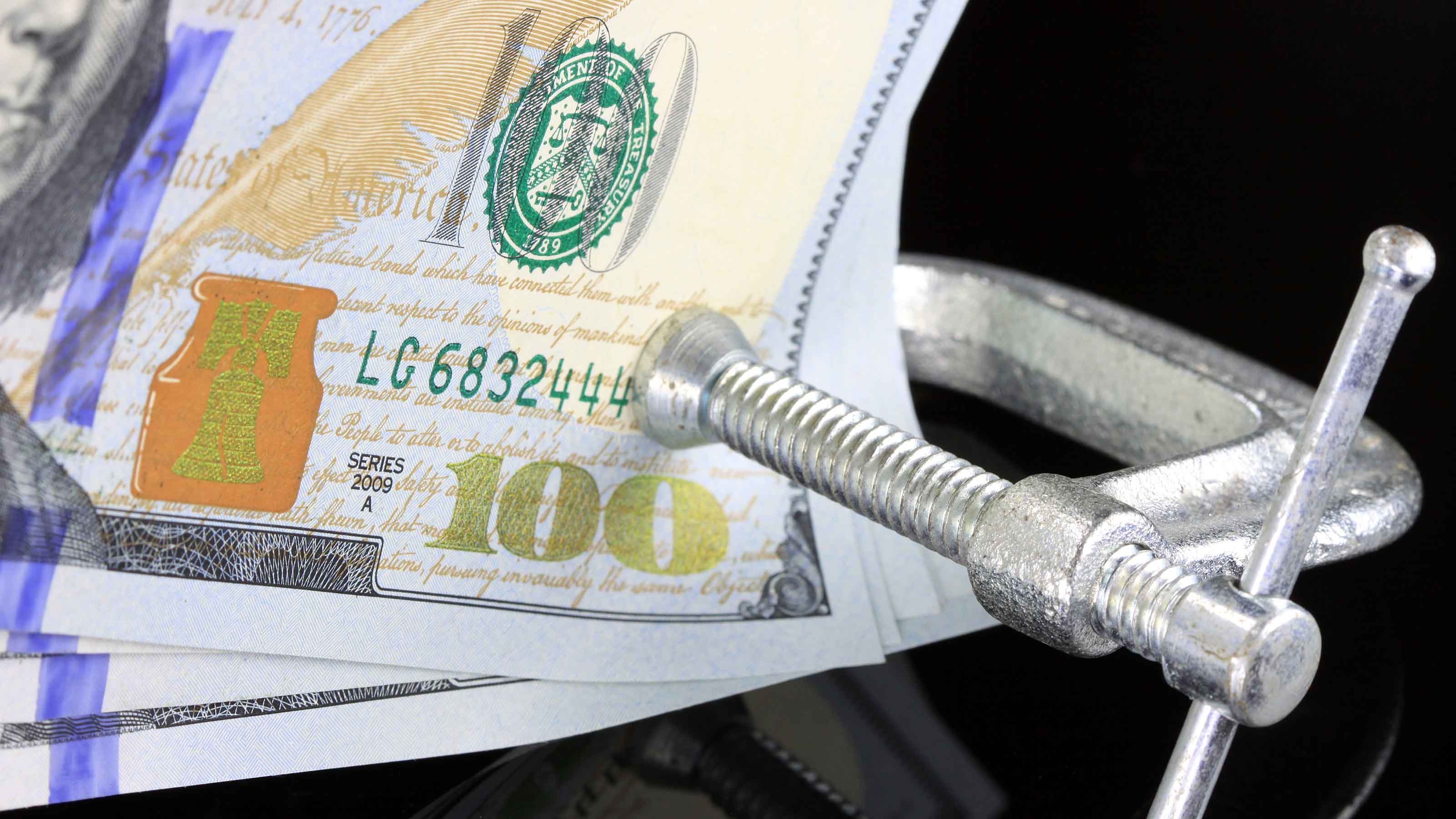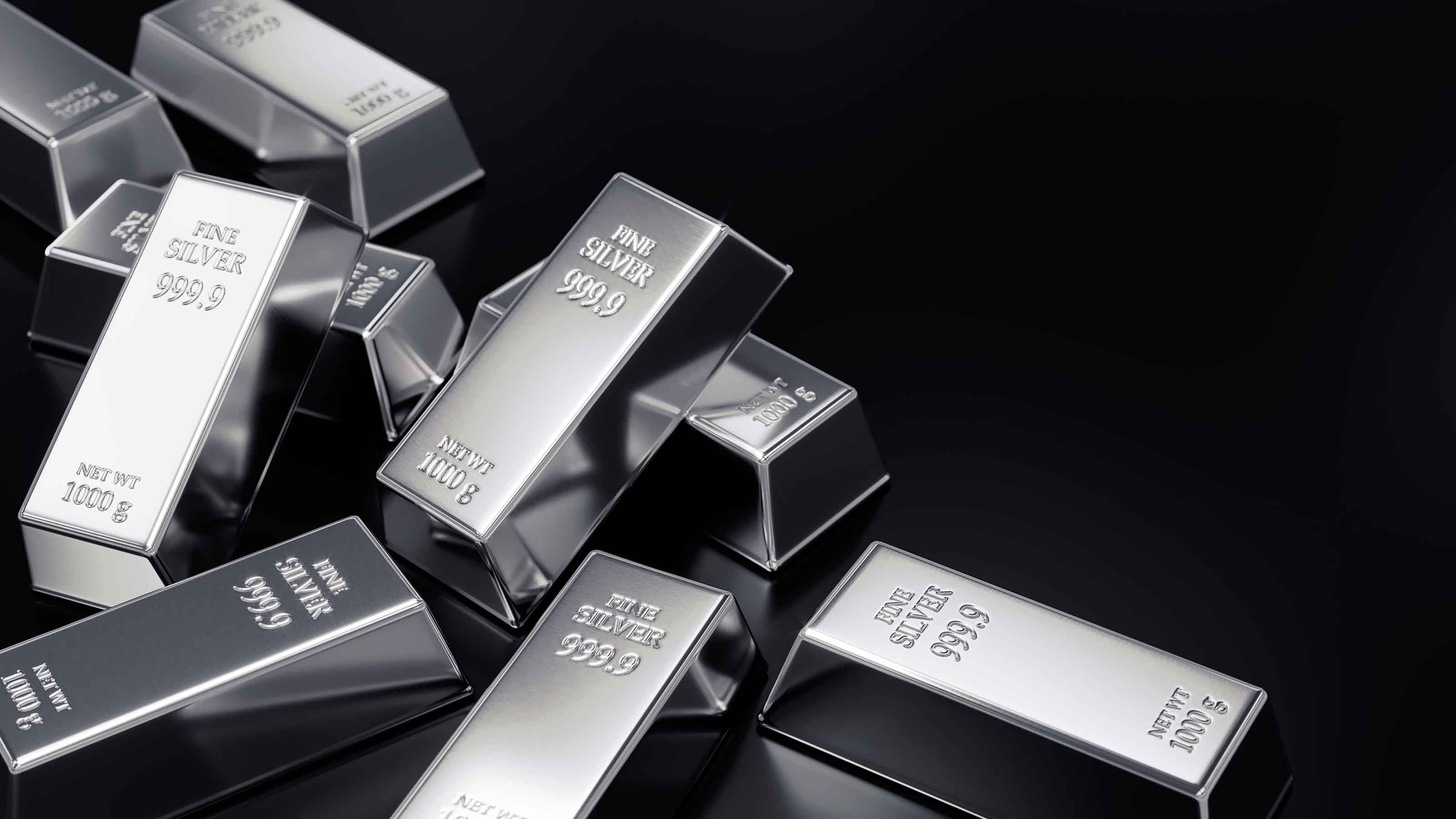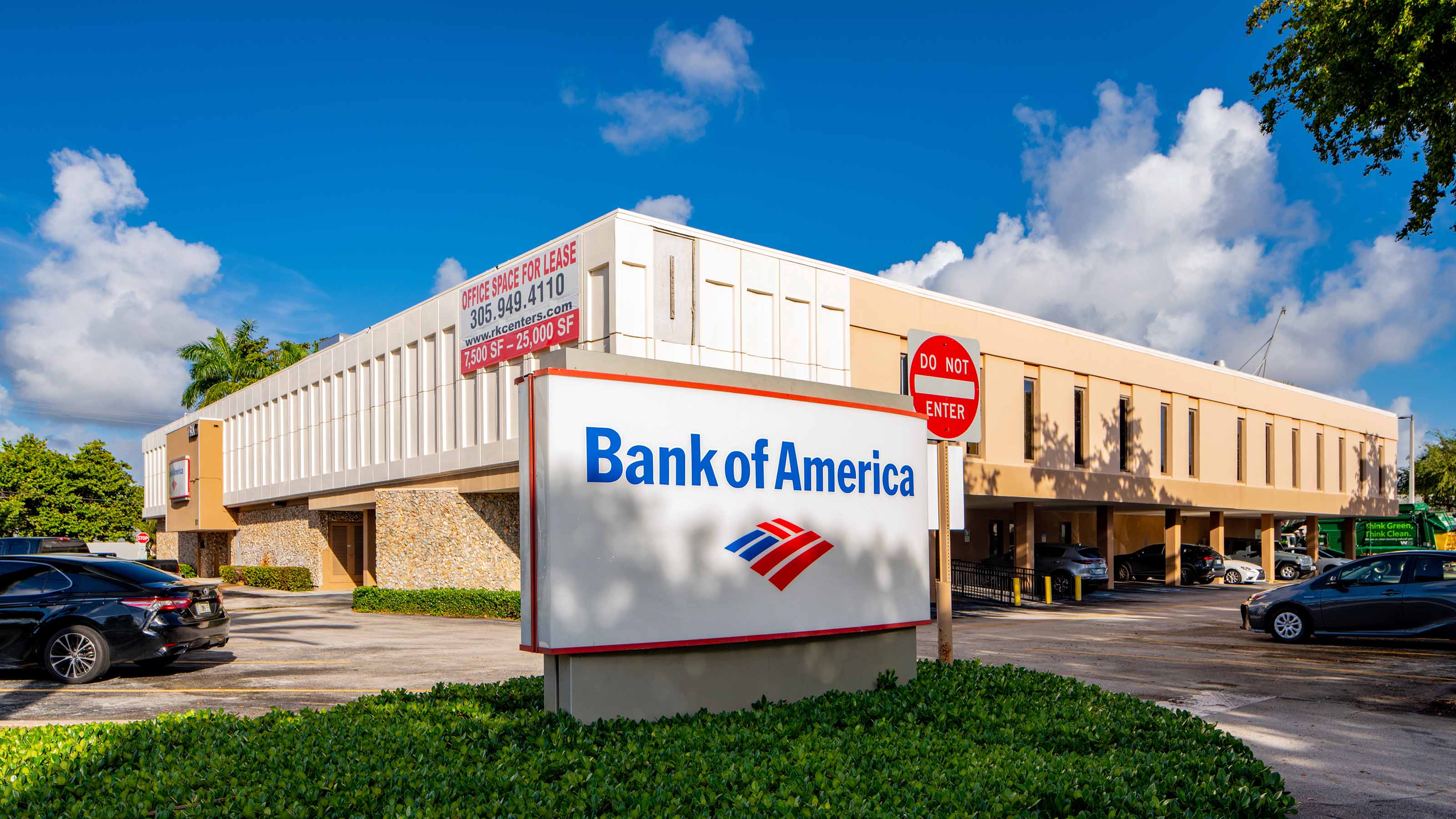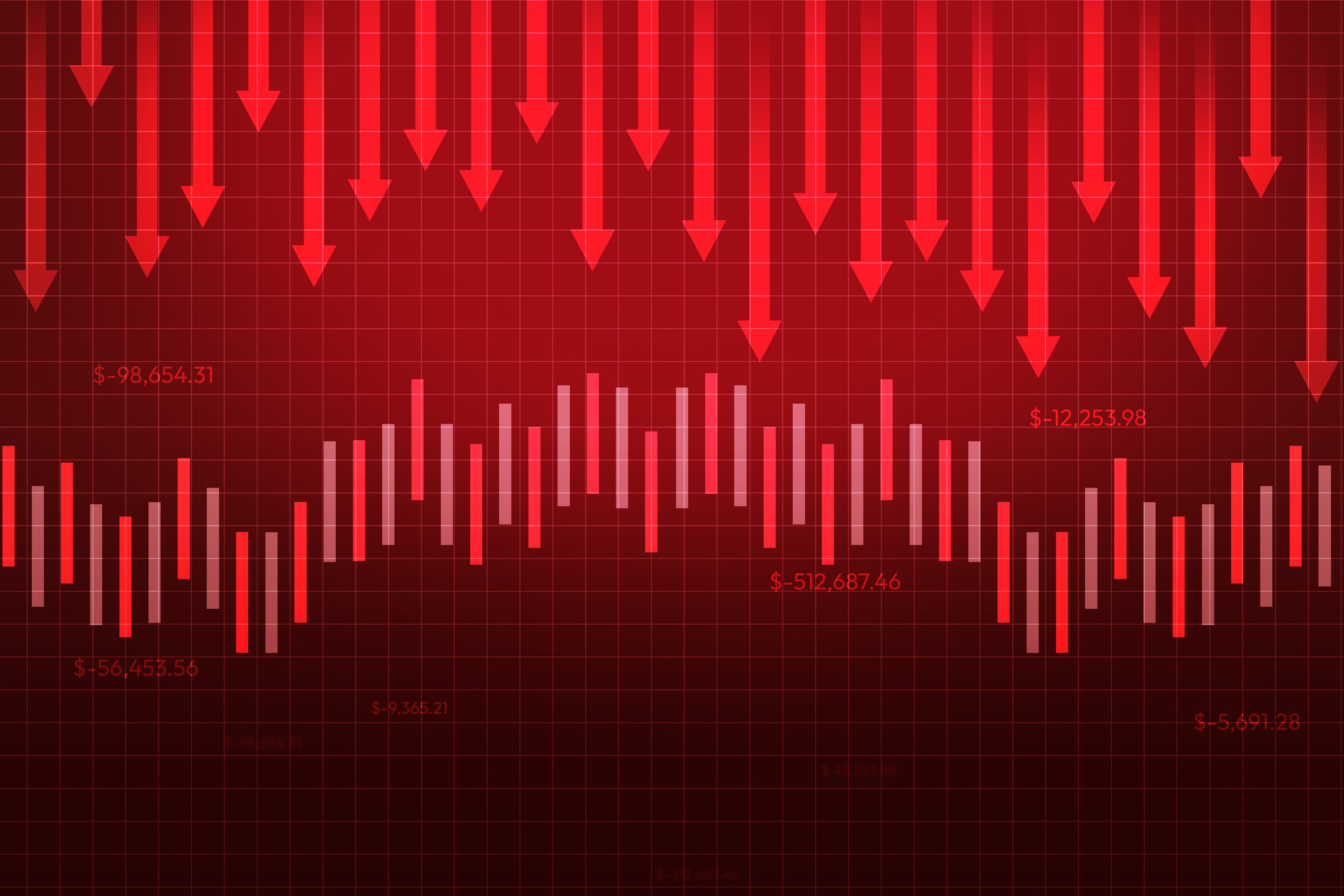7 Best Ways to Play the Reflation Trade
The market is in the early stages of what appears to be a rotation into reflation-friendly stocks. Here are seven ways to play this shift.


There's inflation. There's deflation. And now, there's the reflation trade.
We all have a pretty good idea of what inflation is. When demand outstrips supply, prices rise. This is often, though not always, driven by Federal Reserve policy. But the essence is an excess of demand (or shortage of supply) that forces prices to rise.
Deflation is the opposite scenario when you have an abundance of supply and relatively sparse demand, prices fall. And naturally, we saw a lot of deflation in 2020. With people around the world stuck at home for most of the year because of COVID restrictions, large segments of the economy saw a major dearth of demand.
So, what's reflation?
Call it "normalization." It's a quick bout of inflation to bring prices back to their long-term trend. And as 2021 advances, we're going to see the economy get back to normal. With every passing day, a couple million more Americans get vaccinated, and the restrictions that have kept a lid on growth continue to get lifted. This will only accelerate as new COVID cases fall.
Meanwhile, we already have trillions of dollars in artificial demand in the system due to Fed stimulus, jobless benefits and a host of other federal spending projects with trillions more yet to be spent. Just this past week, the Senate passed a $1.9 trillion stimulus bill, and this is by no means the end of it.
So, we can expect our deflated economy to get reflated in a hurry.
2020 was a year that favored technology stocks, which are relatively insulated from swings in the economic cycle. And while reflation is not necessarily bad for tech (though it can be), the reflation trade is a lot better for economically sensitive value stocks and particularly for commodities, basic industries and financials. Many of our best stocks to buy for 2021 include companies that would benefit from a reflation scenario.
Reflation also means rising bond yields, which have already been one of the defining trends of 2021. But again, this is part of normalization. Bond yields are simply returning to pre-pandemic levels, which were already very low by historical comparisons. So, good reflation plays will be stocks and funds that tend to do well when rates are trending higher.
Today, we're going to take a look at the seven best ways to play the reflation trade over the coming months.
Data is as of March 7. Fund yields represent the trailing 12-month yield, which is a standard measure for equity funds, unless otherwise indicated. Stock dividend yields are calculated by annualizing the most recent payout and dividing by the share price.

iShares Silver Trust
- Assets under management: $15.1 billion
- Dividend yield: N/A
- Expenses: 0.50%, or $50 for every $10,000 invested
Gold is most often associated with inflation protection, and with good reason. The yellow metal has been considered a store of value since the dawn of human civilization.
But if you're looking for a better play for the reflation trade, gold's poorer cousin, silver, might be the better buy.
In addition to being a precious metal used in jewelry, tableware, artwork and other collectibles, silver is also an important industrial metal. According to data compiled by Global X ETFs Research Analyst Rohan Reddy, approximately 24% of silver demand comes from electronics components and 60% comes from all industrial uses. Only about 40% is used for jewelry, coins and bars, or other non-industrial use.
Gold, in contrast, gets nearly all of its demand from jewelry and collectibles. Only about 10% is tied to industrial uses. So, while both gold and silver should do relatively well in a broad-based reflation rally, silver stands to potentially benefit more from a surge in economic activity.
One way to invest in silver is via the iShares Silver Trust (SLV, $23.36). This exchange-traded fund (ETF) does nothing more than hold silver bullion. The ETF is designed to track the price performance of spot silver, minus the ETF's modest 0.5% expense ratio.

Invesco Optimum Yield Diversified Commodity Strategy No K-1 ETF
- Assets under management: $4.2 billion
- Dividend yield: 0.0%
- Expenses: 0.59%
The Invesco Optimum Yield Diversified Commodity Strategy No K-1 ETF (PDBC, $18.04) is a real mouthful, but if you want exposure to a diversified basket of commodities poised to benefit from reflation, PDBC fits the bill.
This actively managed ETF trades futures contracts on 14 heavily traded commodities across the energy, metals and agricultural sectors. And, unlike many ETFs in the commodities space, PDBC has no complicated tax forms to deal with. Your gains or losses show up on your broker's 1099, and there are no K-1 forms.
PDBC primarily invests in futures and swaps to provide exposure to the likes of crude oil, heating oil, gasoline, gold, corn, soybeans, wheat, sugar, copper, zinc and other commodities. And reflation bodes well for commodity prices in the short term, as supply conditions are already tightening.
"The demand-supply balance remains relatively tight in iron ore, gold, and copper," explains Pauline Bell, equity analyst at CFRA Research, "while the balance of risks for oil prices are tilted upwards."
In other words, commodities are getting snapped up in a hurry in anticipation of major infrastructure spending increases, and more is likely to come.
But beyond this, there is also the possibility of a legitimate multiyear commodity supercycle. Commodity prices boomed between 2000 and around 2011 before going into a long decline. After years of declining investment, we might be on the verge of a major new bull market in commodities. And PDBC is a solid way to play that trend.

Freeport-McMoRan
- Market value: $50.3 billion
- Dividend yield: N/A
Commodity prices tend to do well during times of inflation or reflation. But mining companies tend to perform even better, as they are effectively leveraged bets on the commodities they produce.
Think about it. A miner's costs are relatively fixed. They employ the same number of people and operate the same amount of machinery irrespective of the price of the commodities. When the prices of the metals they mine are rising, that raises top-line sales with no real impact on expenses, meaning it flows directly to profits.
This brings us to Freeport-McMoRan (FCX, $35.02), one of the world's leading mining groups. Freeport is first and foremost a copper miner, and copper is one of the most important and widely used industrial metals used in construction. So, as goes the economy, so goes demand for copper.
But Freeport's prospects go well beyond a potential construction boom. The company is also well positioned to profit from the long-term trend toward electric vehicles (EVs). Electric vehicles use about four times as much copper as traditional internal combustion vehicles, and renewable energy in general uses four to five times as much copper as traditional fossil fuel power generation.
So, you can think of Freeport as a long-term winner from the shift to EVs with a short-term catalyst in the reflating of the economy.

Southern Copper
- Market value: $57.0 billion
- Dividend yield: 3.3%
Along the same lines, Southern Copper (SCCO, $73.74) should be poised to do well in a global reflation trade.
As you might guess from its name, Southern is primarily a copper company, though it also produces other industrial commodities such as zinc, lead, coal, silver and molybdenum.
Apart from being a leading copper producer, Southern Copper should also benefit from improving conditions in emerging markets. While it has offices in the United States, its primary operations are in Peru and Mexico, and the stock is dually listed on the New York and Lima stock exchanges.
Copper supplies are tight at the moment, and that doesn't look to be changing in the immediate future. Copper mines take time to bring online, and environmental compliance costs are generally higher today than in years past, even in developing countries like Peru. Goldman Sachs recently wrote that the copper market was "now on the cusp of the tightest phase in what we expect to be the largest deficit in a decade."
After trading mostly sideways since 2007, Southern Copper broke out of its long trading range in 2020, and its share price has tripled off of its 2020 lows. Better still, the company recently got back into its groove of improving dividends, upgrading its quarterly payout to 60 cents per share for its February distribution – a 20% bump.
If global reflation really gets underway as expected, this might just be the beginning.

LyondellBasell Industries
- Market value: $36.0 billion
- Dividend yield: 3.9%
LyondellBasell Industries (LYB, $107.89) is a sprawling multinational with operations in 22 countries and sales in more than 100. It's primarily in the business of selling plastics and petrochemicals, but it also has a large refinery business that makes gasoline, diesel fuel and jet fuel.
Lyondell excels in making things that most people bare knew exist. They're the world leader in polypropylene compounds, which are used packaging for consumer products, auto parts and textiles, and a major player in polyethylene, which is used in making plastic bags, shrinkwrap and bottles.
Longer term, Lyondell might face headwinds from the global drive to reduce plastic use. But shorter term, the story looks a lot better. Chemical companies are cyclical in nature, as are refineries. They tend to do well when the economy is humming. So, Lyondell certainly fits the bill as a reflation play. A pick-up in manufacturing should boost the company's petrochemicals businesses, whereas a rebound in travel should keep its refineries busy.
It seems Wall Street is catching on. After nearly a decade of trading in a stagnant range, LyondellBasell has enjoyed an explosive year and is now flirting with new all-time highs. And if the reflation scenario unfolds as expected, this move could just be getting started.
Even after the massive run-up in the share price, LyondellBasell sports an attractive dividend yield of nearly 4%. You don't necessarily buy a stock like LyondellBasell for the dividend, of course. But it's not a bad bonus.

Chevron
- Market value: $211.3 billion
- Dividend yield: 4.7%
Few industries have been battered harder than energy. The industry was already facing oversupply issues before the pandemic, and the collapse in global travel made it all the worse, culminating in the bizarre spectacle of negative crude oil prices last year.
Furthermore, environmental concerns have turned Big Oil into something of a pariah. The global push is to ultimately replace oil and gas with renewable solar and wind energy, and while that transformation might take decades to come to fruition, this potential long-term slackening of demand combined with chronic oversupply creates some serious headwinds for Big Oil on an operational level.
Even the stocks themselves are becoming somewhat taboo to own for some institutional investors.
That said, we're not necessarily looking at multiyear timelines for every stock in our reflation trade list. And while Big Oil might have major long-term headwinds, it can still be a profitable short-term trade.
This brings us to Chevron (CVX, $109.00), one of the world's largest integrated energy companies. Chevron recently hit new 52-week highs, and the company is quickly closing in on its pre-COVID price levels.
If you're worried you might have already missed the boat, suffice it to say you haven't. Shares are not materially higher than their 2008 levels, as the stock has traded in a range for the past 12 years. Even after the recent move, CVX still has yet to break out of that range.
As was the case with LyondellBasell, Chevron also pays a handsome dividend with a yield just shy of 5%.

Bank of America
- Market value: $320.6 billion
- Dividend yield: 2.0%
The current market environment isn't exactly ideal for banks. With the Fed keeping short-term rates pegged at effectively zero, banks aren't earning much on their excess reserves. Furthermore, eviction freezes put in place in many cities in response to the COVID pandemic have put additional pressure on lenders.
But all of that said, banks are in surprisingly good shape after what has been an exceptionally dangerous year. After more than a decade of de-risking after the 2008 meltdown, the major banks had the financial strength to make it through the pandemic with no major blow-ups. (Exceptionally generous liquidity provided by the Fed helped, of course.)
The fact remains that banks are starting this reflation trade in a much better position than they did the last one, in 2009. They're better capitalized and in a strong position to make loans to the companies looking to expand in the post-virus world.
As an example, consider Bank of America (BAC, $36.93). Bank of America recently broke out to new 52-week highs. But the shares still trade at levels first seen in the late 1990s, and prices would have to rise nearly 50% from current levels to touch the old pre-2008 all-time highs.
That might take a while. But in the meantime, bank shares such as BAC are showing a lot of momentum, and that should only accelerate in a reflation scenario.
Profit and prosper with the best of Kiplinger's advice on investing, taxes, retirement, personal finance and much more. Delivered daily. Enter your email in the box and click Sign Me Up.

Charles Lewis Sizemore, CFA is the Chief Investment Officer of Sizemore Capital Management LLC, a registered investment advisor based in Dallas, Texas, where he specializes in dividend-focused portfolios and in building alternative allocations with minimal correlation to the stock market.
-
 Stocks Struggle for Gains to Start 2026: Stock Market Today
Stocks Struggle for Gains to Start 2026: Stock Market TodayIt's not quite the end of the world as we know it, but Warren Buffett is no longer the CEO of Berkshire Hathaway.
-
 Tip: Ways to Track Your Credit Card Rewards
Tip: Ways to Track Your Credit Card RewardsHere are the best strategies and apps to help you stay current with your credit card rewards.
-
 How New Investors Can Pick Their Perfect Portfolio, According to a Pro
How New Investors Can Pick Their Perfect Portfolio, According to a ProSee what Cullen Roche has to say about finding your perfect portfolio as a new investor and his two-word answer on where he thinks the stock market is headed in 2026.
-
 The November CPI Report Is Out. Here's What It Means for Rising Prices
The November CPI Report Is Out. Here's What It Means for Rising PricesThe November CPI report came in lighter than expected, but the delayed data give an incomplete picture of inflation, say economists.
-
 Stocks Chop as the Unemployment Rate Jumps: Stock Market Today
Stocks Chop as the Unemployment Rate Jumps: Stock Market TodayNovember job growth was stronger than expected, but sharp losses in October and a rising unemployment rate are worrying market participants.
-
 The Delayed November Jobs Report Is Out. Here's What It Means for the Fed and Rate Cuts
The Delayed November Jobs Report Is Out. Here's What It Means for the Fed and Rate CutsThe November jobs report came in higher than expected, although it still shows plenty of signs of weakness in the labor market.
-
 December Fed Meeting: Updates and Commentary
December Fed Meeting: Updates and CommentaryThe December Fed meeting is one of the last key economic events of 2025, with Wall Street closely watching what Chair Powell & Co. will do about interest rates.
-
 The Delayed September Jobs Report Is Out. Here's What It Means for the Fed
The Delayed September Jobs Report Is Out. Here's What It Means for the FedThe September jobs report came in much higher than expected, lowering expectations for a December rate cut.
-
 Risk Is Off Again, Dow Falls 397 Points: Stock Market Today
Risk Is Off Again, Dow Falls 397 Points: Stock Market TodayMarket participants are weighing still-solid earnings against both expectations and an increasingly opaque economic picture.
-
 October Fed Meeting: Updates and Commentary
October Fed Meeting: Updates and CommentaryThe October Fed meeting is a key economic event, with Wall Street turned into what Fed Chair Powell & Co. did about interest rates.
-
 The Delayed September CPI Report is Out. Here's What it Signals for the Fed.
The Delayed September CPI Report is Out. Here's What it Signals for the Fed.The September CPI report showed that inflation remains tame – and all but confirms another rate cut from the Fed.
